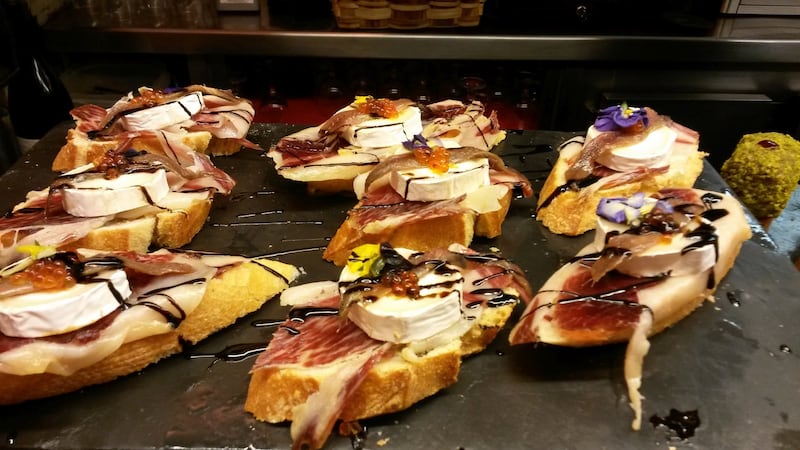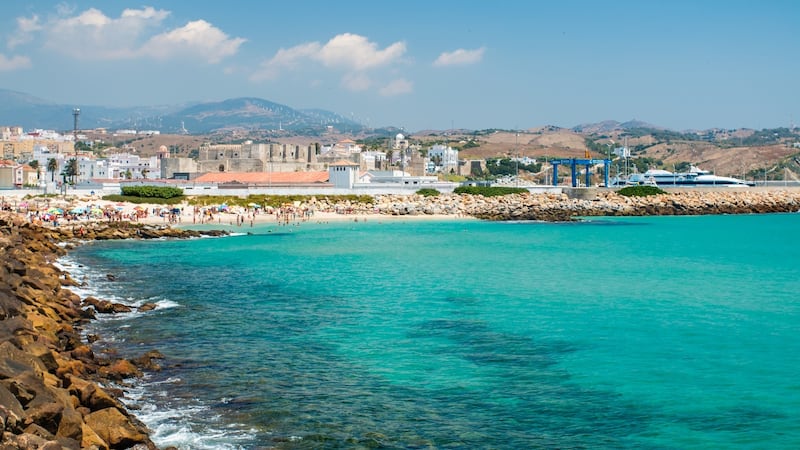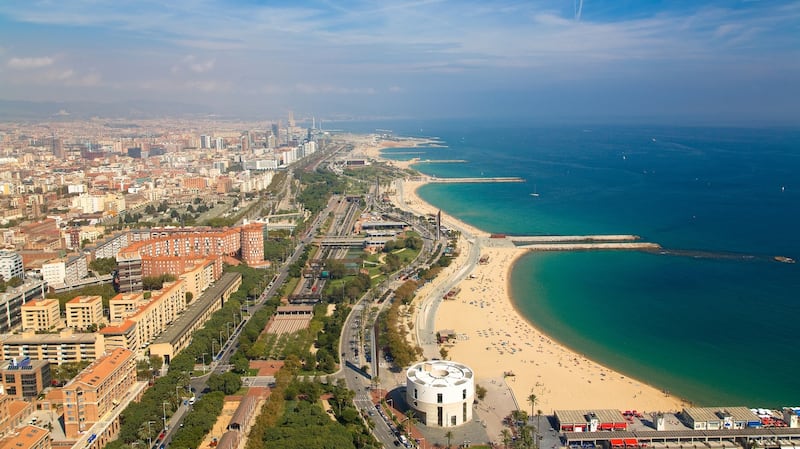The beaches of the south coast are an industry unto themselves, but lagging not far behind are the Canaries and, to a lesser extent, the Balearics. The attraction is self-evident: guaranteed sunshine at an affordable price, and an infrastructure that is both designed for and caters to visitors from Ireland and Britain.
The comfort of the familiar is enough to keep many from venturing beyond the established resort towns of the costas or the islands, but what about those budget-minded travellers looking for a more authentic Spanish experience? The following advice will definitely help keep costs down.
Can I eat well without spending heavily?
Food gets cheaper the further away you go from the main tourist attractions. Meals are less expensive in Extremadura than in neighbouring Andalucía, or in Tarragona than in Barcelona.
"In the big Spanish cities," says Irish Times Spain correspondent Guy Hedgecoe, "that also applies to the main squares, or plaza mayor, where food tends to be pricier and of worse quality than if you move a few blocks away."
Conor Pope, the Irish Times consumer correspondent who lived in Spain, says you can keep costs down if you "eat like a Spaniard (or a Healy Rae) and have your big meal in the middle of the day. The menú del día can be ridiculously cheap and incredibly good quality. A three-course meal including wine can be found for not much more than a tenner in many places."

Tapas are cheap, delicious and served virtually everywhere (avoid anywhere that has "tapas bar" in the name – it's a tourist trap). In San Sebastián and the Basque country – Spain's culinary powerhouse – they're known as pintxos, and are usually a gourmet experience with few rivals: even the most unassuming taberna or café will serve up nibbles deserving of a Michelin star (speaking of Michelin stars, San Sebastián has 16 of them, including three of Spain's five three-starred restaurants). The practice of giving out free tapas with your drink still exists in a handful of Spanish cities – including Granada, medieval Ávila and Almería, on the south coast not far from Malaga – and even some neighbourhoods of Madrid.
Less familiar to international visitors is the venta, the Spanish version of the roadside diner. These no-frills, family-run restaurants were originally established to offer truck drivers and weary travellers a decent meal. Most of them don’t look like much, but the quality of the food (nothing fancy, just solid dishes) is often exceptional – and most use products sourced locally, if not actually grown by the restaurant owners themselves. Short of getting an invite to a Spanish house, this is as close as you’ll get to home cooking.
Finally, another tip from Pope: “Don’t pay for breakfast in any hotel. It is always better and cheaper in local bars. A tortilla sandwich, a fresh orange juice and a coffee in a local bar and will cost you half nothing. And spirits are great value – Spanish bartenders just keep pouring.”

What about accommodation?
Like food, prices get cheaper the further away you are from tourist centres. However, all bets are off during festival time – and Spain has lots of festivals – when prices will skyrocket, with basic rooms going for four times the price of non-festival times.
The best low-cost accommodation is the pensión, also called casa de huéspedes or hospedaje and denoted with a “CH” on the sign. It is the Spanish version of the simple guesthouse, and while you should expect timeworn furnishings, shared bathrooms and threadbare comforts, the service is usually friendly and warm.
A step up from the pensión, but still not as expensive as a hotel is the hostal, which is basically a small hotel with decent amenities and, usually, ensuite bathroom (baño privado). If you’re looking for really budget options, you have your choice of the cama (basically a dorm bed or a bed in a private house) or a fonda (a traditional inn with basic rooms above it).
It's worth keeping an eye out for deals with the collection of 90 or so state-owned hotels known as paradores (paradores.es), hotels in historic buildings like a castle or a converted medieval convent – and often in gorgeous locations. Out-of-season prices can plummet considerably.

What are the less expensive regions?
Pretty much anywhere where the international tourists aren't. So instead of the Costa del Sol, try other Andalusian hotspots like the Costa de la Luz, west of Malaga on the Gulf of Cádiz. Beautiful white beaches, lots of local tourists and prices considerably lower than the resorts on the other side of the Rock of Gibraltar.
Instead of the Basque Country, consider Asturias next door. A dramatic coast punctuated by beautiful fishing villages like Cudillero, 60km north of Oviedo, the regional capital and a worthwhile destination in its own right thanks to its elegant old town and fine collection of restaurants specialising in the terrific local cuisine. Visitors doing the Camino will be familiar with the region's charms, as the route cuts through it.

What about in cities: are there cheap but safe areas that are still rewarding for tourists?
With some planning, Barcelona can be surprisingly affordable. Many museums are free on specific days, like the Museu Picasso (6pm to 9.30pm Thursday and all of the first Sunday of the month); the Museu Nacional d’Art de Catalunya (after 3pm Saturday and the first Sunday of the month); and the Castell de Montjuïc (from 3pm Sunday and all day on the first Sunday of the month).
It seems like every visitor to Barcelona finds their way onto the Rambla boulevard and the Plaza de Catalunya at one end of it, but far less crowded – and with better-quality food at lower prices – are the Born and Eixample areas just beyond the central Barri Gòtic. Both Pope and Hedgecoe warn against ever stopping for food on or within sight of the Rambla, where everything is blander and pricier. And if you want a budget Gaudí experience, ignore the Sagrada Familia in favour of the more low-key Gaudí Museum, which is three times cheaper.
In Madrid, the Lavapiés and La Latina districts are attractive and offer better-priced food and accommodation than more central areas closer to the Puerta del Sol and the Plaza Mayor. Lavapiés, in particular, offers a broad range of affordable food from its immigrant community, including curries and African dishes.
For Hedgecoe, there's little need to splash out on sites in Madrid: for example, a wander from Puerta del Sol past the Opera house will take you to the pleasant Plaza de Oriente which faces the royal palace. A short walk away is the Templo de Debod, an Egyptian temple reconstructed in the Parque de la Montaña, northwest of Plaza de España. If you are planning to visit the big trio of museums – the Museo del Prado, Museo Thyssen-Bornemisza and Centro de Arte Reina Sofía – be sure to get the Paseo del Arte ticket, which costs €29.60 – three separate tickets will cost €36.
Like Barcelona, many museums have free entry at different times, including the big three (but inevitably they get absolutely jammed at these times). Being an EU citizen has its advantages in Madrid, as they have free entry to the Palacio Real for the two hours before closure Mondays to Thursdays, and the Monasterio de las Descalzas Reales and Monasterio de la Encarnación on Wednesday and Thursday afternoons.
What about public transport?
The public transport systems of most cities allow you to buy multi-trip tickets which tend to be more economical than buying a single each time. In Madrid, for example, you can buy a public transport card with 10 metro/bus trips on it for €15. Barcelona, Seville and Valencia have similar systems allowing you to travel around central areas of those cities. In the big cities, the cercanía (regional train) network is generally cheaper than the metro.
But what if I’m planning a package holiday to Spain – how can I get the best deals?
Package holidays are primarily attractive for reasons of convenience and cost, but there are two ways of ensuring you get the best possible deals, but one of them is a high-risk strategy that isn’t necessarily encouraged.
The first is to book early. January is the traditional month when that year’s summer holidays go on sale, as tour operators look to cover part of the cost of their outlay on apartments and flights by offering all kinds of early-booking incentives, including the best lead-in prices and a host of add-ons, from room upgrades to free child places. Early booking also means you have the widest range of choice.
The alternative is to book at the very last minute in the hope of getting a rock-bottom deal as operators look to get rid of unsold packages. A bold move if you’re flexible about where or when you go, but not advisable if you’re looking to plan a family break during school holidays. Spain’s enduring popularity means that tour operators know exactly how many holidays they can sell during the year and will generally run out of summer stock by the middle of spring. If they do have holidays left over, they’re usually late-season breaks available for dates after the beginning of the school term and generally limited in terms of destination and holiday type.
Any other tips?
If you can avoid it, don’t holiday when Spain goes on holiday, which is usually from the last two weeks in July into the middle of August – with August 1st and 15th being the busiest times of the year. Prices will fall outside of that period, plus you’ll avoid the worst of the queues, which exist for everything.




















